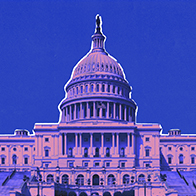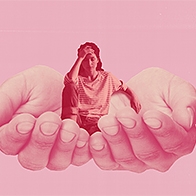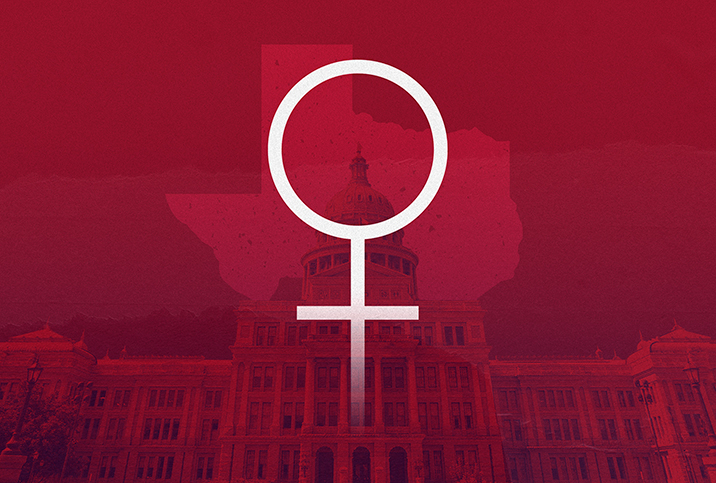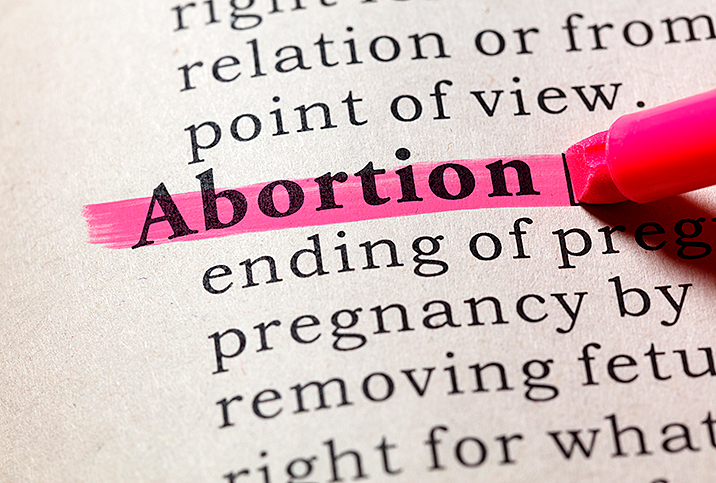The History of Abortion Law in the United States
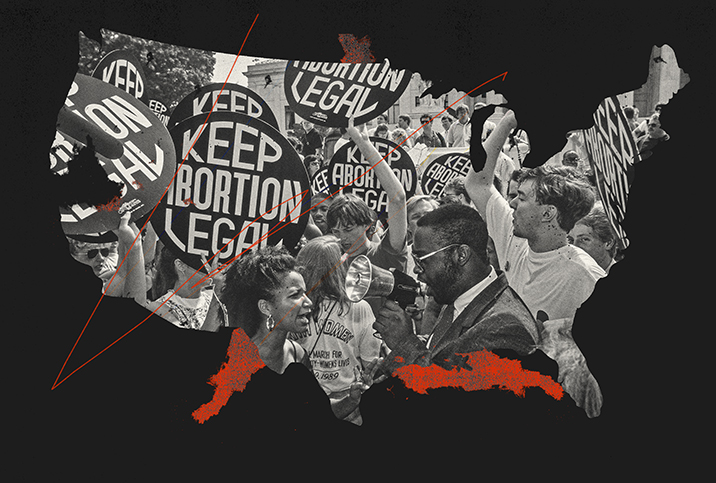
It's fair to say a lot has happened in America within the past 300 years, especially once we declared ourselves an independent nation founded on the prospects of equality and justice for all. Of course, "all" in this instance meant "white, land-owning men," many of whom were only a generation or so removed from the group of Puritans who hanged women for "witchcraft."
It would take nearly another century and a half before women would be allowed to vote, meaning that for about half of our country's existence, every governmental decision affecting the lives of citizens was made by white men, even when the issue at hand didn't pertain to them.
Unfortunately, this circumstance hasn't changed much.
As we can see with recent abortion laws passed in Texas, Idaho and many other states, women still have seemingly little say over their bodies. While echoes of that same Puritan perspective still ring in some lawmakers' ears today, this isn't a recent issue.
The first abortion bans in the United States
Officially, the United States didn't have any laws relating to abortion until the mid-1800s, explained David Cohen, J.D., a law professor at Drexel University in Philadelphia and co-author of "Living in the Crosshairs: The Untold Stories of Anti-Abortion Terrorism," published by Oxford University Press.
"States started to ban abortion at quickening, which is the time at which you feel movement...during the pregnancy. So we're talking like 16 to 20 weeks," Cohen said. "That started a wave of laws that banned abortion, resulting in every state banning abortion by the early 1900s."
Naturally, this didn't stop women from seeking abortions, just as prohibition didn't stop Americans from drinking. But there were no "abortion speakeasies" for women to discreetly yet safely get an abortion.
"It just made abortion more dangerous, sending providers and patients into the shadows," said Jacqueline Ayers, J.D., senior vice president of policy, organizing and campaigns at Planned Parenthood in Washington, D.C.
"By 1965, illegal abortions made up one-sixth of all pregnancy-related deaths in the United States, and that's just according to official reports. Doctors think the actual number of deaths from illegal abortion was a lot higher," Ayers said.
The nature of abortions being almost exclusively unsafe, illegal procedures remained the status quo until the late 1960s, when some states began adopting laws that made abortion legal. The landmark Roe v. Wade case occurred in 1973, finally protecting women's rights to abortion from excessive government restriction.
But Roe v. Wade didn't protect women's rights to abortion from all government restrictions, and this caveat is what allows current lawmakers to create increasingly strict restrictions.
The consequences of abortion bans
Cohen cited the Turnaway Study, which analyzed the effects of carrying an unwanted pregnancy to term on a woman's mental health, physical health and socioeconomic situation. The study suggested that women who were denied an abortion and carried an unwanted pregnancy to term were four times more likely to live below the federal poverty level.
Additionally, they are more likely to stay with abusive partners, suffer anxiety and loss of self-esteem, and experience physical health issues such as chronic pain and gestational hypertension, and less likely to have aspirational life plans. The study also found abortion denial caused serious implications for children born out of unwanted pregnancies and other children in the family.
"These effects are not borne evenly by everyone," Cohen added. "These laws have a much more burdensome effect on women of color and poor women. There's a real racial and economic justice element to abortion, too."
Analysis from the Associated Press backed up Cohen's statement. In states where abortion bans and restrictions are taking place, women of color already have limited healthcare access and a lack of options for quality, effective birth control. Schools in these states also regularly fail to offer comprehensive sex education. The unfortunate flip side of this is that women of color in these states are more likely to have an abortion than white women.
Women of color make up 66 percent of the population receiving abortions despite comprising only about 36 percent of the female population.
Historically, women in lower socioeconomic groups have always been especially burdened by abortion restrictions.
"A survey in the 1960s found that nearly 8 in 10 New York City women with low incomes who had an abortion attempted a dangerous, self-induced procedure," Ayers said.
This begs the question of why? Why are lawmakers so insistent on passing legislation that has a proven record of causing further damage to already marginalized groups when the benefits are, for lack of a better word, nonexistent?
"I think for some people, it is a strong belief that a fetus is a person and abortion is murder," Cohen said. "Often, that is based in a conservative, religious view of the world. For other people, it's about controlling women and their sexuality and their choices, also based in a conservative, religious view of the world. And I think those things come together for a very vocal and influential minority to continue to push these laws restricting or even banning abortion."
Citing a 2021 poll from Gallup, Ayers said 80 percent of the American public thinks abortion should be legal.
"Let's be clear," Ayers said. "There is no state in the country where banning abortion is popular.
"Despite the clear facts, a vocal minority of out-of-touch politicians continue to push for abortion bans and restrictions at the state level," she continued. "And the Supreme Court may overturn Roe this summer, in direct opposition to the will of the American people who support access to safe, legal abortion."
"People should be able to get the health care that is safe and proven by medical evidence to be effective—and abortion is," Cohen added. "Legislators who have no medical training need to stay out."
How to promote better abortion laws in the U.S.
"No one can be free unless they can make their own decisions about their body and their life," Ayers said. "Abortion is health care, and health care is a human right."
While recent state restrictions might be discouraging, if the majority of people in the United States are in favor of access to safe, legal abortions, hope is, fortunately, not lost.
Lawmakers still rely on their constituents, and at the state level, individuals can vote for lawmakers in favor of fair abortion laws and reproductive freedom.
At the federal level, Ayers suggested people "call on Congress to repeal the Hyde Amendment, a discriminatory law that blocks federal health programs like Medicaid from covering abortion."
She also stressed the importance of the U.S. Senate passing the Women's Health Protection Act, which has already been passed in the U.S. House and would establish a statutory right to provide and receive an abortion, free from restrictions that block access to care.
Cohen suggested volunteering with local organizations that protect the right to choose, donating to organizations that fight for reproductive freedom and, most simply, engaging in conversation about these issues.
Abortion is a medical procedure that is currently illegal or restricted in some portions of the United States. For more information about the legality of abortion in your area, please consult a local healthcare provider.







